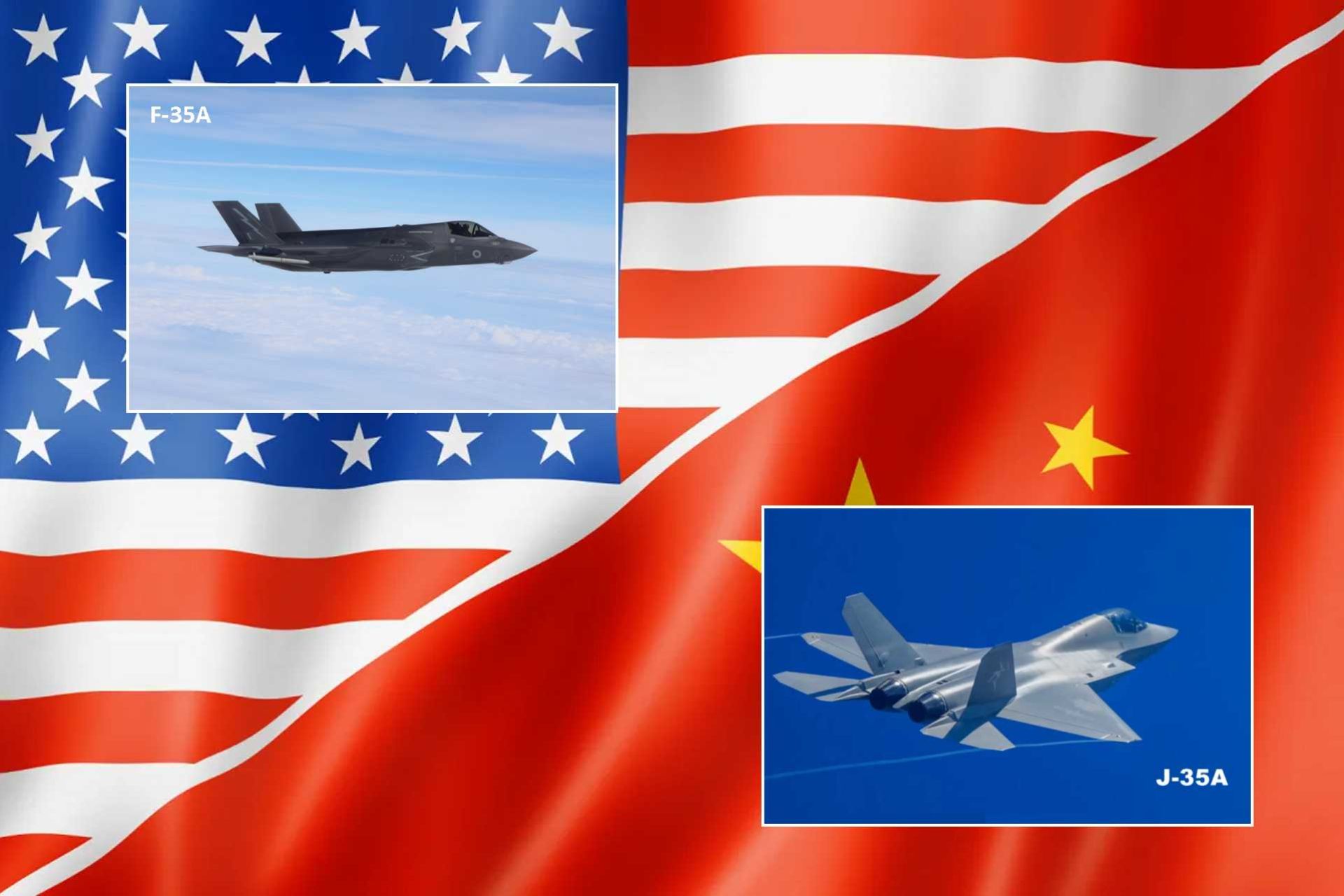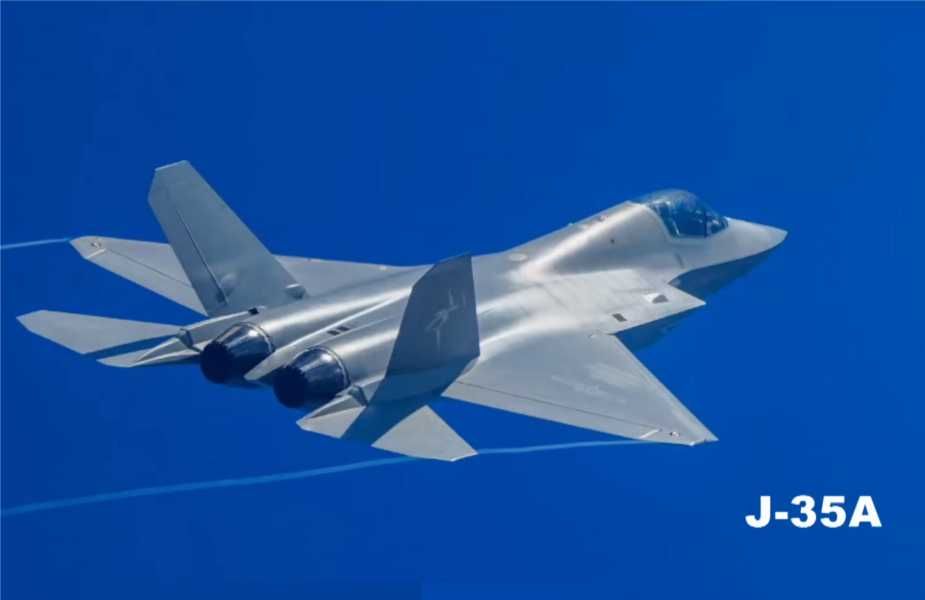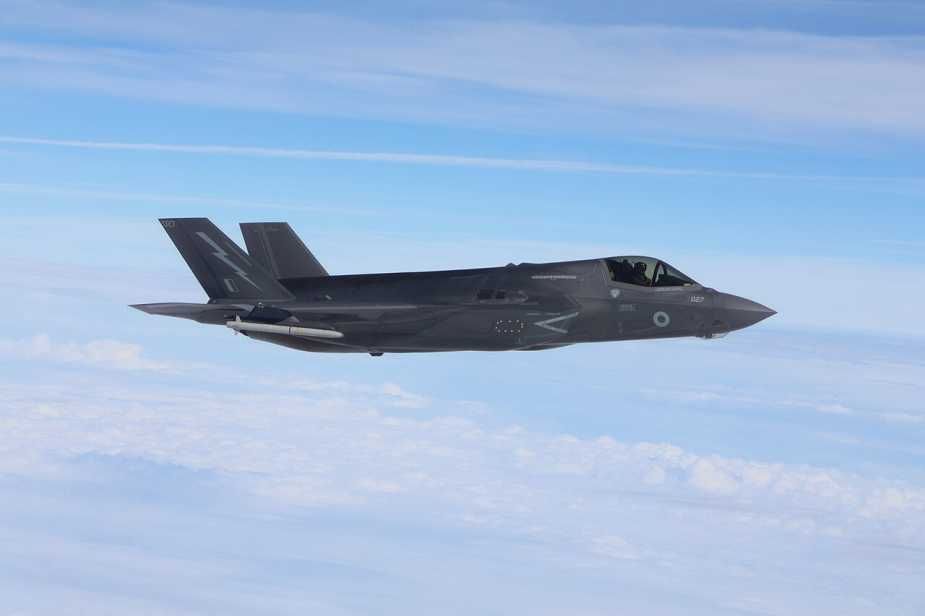Breaking News
Analysis: Chinese J-35 vs US F-35 Fighter Jet: Can China’s Stealth Fighter Challenge America's Dominance?.
In the world of fifth-generation fighter jets, stealth capabilities are often considered the defining characteristic, influencing an aircraft's ability to penetrate enemy airspace undetected and engage in precision strikes without exposing itself to advanced radar systems. The Chinese J-35, designed primarily for carrier operations, is emerging as a key player, with stealth technology that closely mirrors—and in some areas may even rival—the renowned F-35 Lightning II. But could the J-35’s stealth outpace that of the F-35 and establish China as a formidable competitor? Let's explore this in-depth.
Follow Army Recognition on Google News at this link

Chinese J-35 and US F-35 Stealth Fighters Representing a New Era of Air Superiority Rivalry (Picture source: Wikimedia)
At first glance, the J-35 shares notable design elements with the F-35, particularly in terms of its shape and external features optimized for low observability. The J-35 is built with angular surfaces, internal weapons bays, and a reduced radar cross-section (RCS) to evade detection by enemy radar systems, much like the F-35. However, the devil is in the details when it comes to stealth, and there are several areas where the J-35 may have an edge over its American counterpart.
The F-35 is designed with a focus on a low RCS across a broad range of radar frequencies. It utilizes a combination of radar-absorbent materials (RAM) and geometrically optimized surfaces to scatter incoming radar waves. The F-35 has been highly effective in reducing its RCS, reportedly measuring as low as 0.001 m² in some configurations, making it highly difficult to detect, even by advanced long-range radar systems. In contrast, the J-35, while still under development and shrouded in some secrecy, is believed to also employ advanced radar-absorbent materials and stealth geometry similar to the F-35. However, given the design’s heavier reliance on features such as twin engines and a more compact, somewhat bulkier airframe, it’s plausible that the J-35's RCS could be slightly higher than that of the F-35, but still within the radar-evading threshold for operational stealth fighters. The Chinese aircraft might also employ a different combination of RAM materials, potentially yielding a more efficient stealth signature, although this remains speculative without full technical details.
Infrared signature (IR) is a critical aspect of stealth, as modern IR sensors can track hot engine exhausts even if radar is defeated. The F-35 utilizes a divertless supersonic inlet (DSI) and tailored exhaust nozzles that reduce the aircraft’s heat signature by dispersing engine exhaust and allowing for less detection from infrared systems. This gives the F-35 an edge in stealth, particularly in high-threat environments with advanced IR tracking.
The J-35 features a twin-engine configuration, which, while offering improved thrust and reliability for carrier operations, may inherently produce a larger infrared signature than the single-engine F-35. However, the J-35 could potentially employ more advanced heat-dissipation techniques and exhaust management similar to the Russian Su-57 or the F-22, aimed at minimizing the thermal footprint. It’s still unclear how successful these efforts are in keeping the J-35 competitive in terms of IR stealth against the F-35, which has undergone years of refinement in this area.

The J-35, China’s next-generation stealth fighter, is designed with advanced stealth technology that aims to rival the F-35 in several key aspects, though there are notable differences in their designs and capabilities. (Picture source Wikimedia)
One of the defining features of the J-35 is its design for carrier-based operations, which influences its stealth characteristics. Unlike land-based stealth fighters, which can be optimized for a broad range of missions, carrier-based fighters face unique challenges such as the need for rapid takeoff and landing in highly contested areas. Carrier-based fighters are often required to fly at lower altitudes to avoid detection and to make the most of the ship’s radar coverage. At such altitudes, the ability to avoid detection by ground-based radar becomes crucial. The J-35’s stealth, therefore, needs to be fine-tuned for both high-altitude and low-altitude performance, which could give it an advantage over the F-35 in specific combat scenarios, particularly in naval or anti-access/area denial (A2/AD) environments.
Both the U.S. F-35 and Chinese J-35 use internal weapons bays to preserve their stealth profile while carrying air-to-air and air-to-ground munitions. The J-35’s weapons bay appears to be optimally designed for its naval role, with the ability to carry a variety of munitions without sacrificing stealth. It is possible that the J-35, with its tailored design for naval warfare, might have an edge in its ability to carry heavier payloads at lower radar visibility compared to the F-35, which is optimized for a wider range of missions, including multi-role land-based strike operations.
While stealth geometry and materials are critical to evading radar detection, sensor fusion—the integration of multiple sensor feeds into a cohesive operating picture—plays an equally vital role in modern fifth-generation fighters. The F-35 is widely praised for its cutting-edge sensor fusion capabilities, combining data from its radar, infrared sensors, and electronic warfare systems into a single, easy-to-interpret display. This allows the pilot to detect and track targets while remaining virtually undetectable. The J-35 is expected to incorporate a similar suite of sensors, including active electronically scanned array (AESA) radar, infrared search and track (IRST) systems, and electronic warfare (EW) capabilities. Chinese advancements in sensor technology could give the J-35 a level of sensor fusion comparable to that of the F-35, with a strong emphasis on jamming and electronic countermeasures to disrupt adversary radar systems and improve survivability in contested environments. If China has indeed improved its sensor fusion capabilities beyond those of the F-35, the J-35 could potentially achieve stealth with enhanced situational awareness, making it even more difficult to target or intercept.
The J-35’s stealth capabilities also need to be understood in the context of China’s growing military and naval strategy. China has heavily invested in creating a comprehensive A2/AD network, with a combination of surface-to-air missiles, anti-ship ballistic missiles, and radar systems designed to challenge and deter U.S. and allied forces in the Indo-Pacific region. In such a theater, stealth capabilities are not just about evading detection—they are about surviving and operating in a contested, highly monitored environment. The J-35’s stealth could prove to be a key factor in allowing the PLAN to project power in the South China Sea, East China Sea, and beyond, particularly when operating in conjunction with China’s anti-access/area denial strategy. By pairing the J-35 with advanced long-range anti-ship missiles and advanced radar jamming systems, China may have developed a stealth aircraft capable of penetrating U.S. missile defense systems and radar networks—potentially giving it a decisive edge in regional conflicts where U.S. and allied forces rely on radar-based detection.

The U.S. F-35 and Chinese J-35 both incorporate advanced stealth technologies aimed at reducing their visibility to radar and infrared detection systems. Still, several key differences in their designs and capabilities reflect their distinct origins and operational goals. (Picture source Wikimedia)
While the American F-35 remains the benchmark for stealth in the fifth-generation fighter category, the J-35’s potential stealth capabilities should not be underestimated. Despite differences in design, including the J-35's twin-engine layout, China has seemingly leveraged cutting-edge materials, advanced infrared management, and possibly superior sensor fusion to craft a formidable stealth fighter. Should these technological advancements prove effective, the J-35 could indeed surpass the F-35 in specific areas, particularly in terms of its low-altitude stealth performance and integration with China’s expanding naval capabilities.
The global military balance is shifting, and with the J-35, China is clearly signaling that it intends to challenge U.S. air dominance not just on land but in the contested skies above the seas. Whether the J-35 can fully match or even surpass the F-35’s stealth capabilities in every domain remains to be seen, but it is certainly a fighter that demands attention from military analysts and defense planners around the world.


























